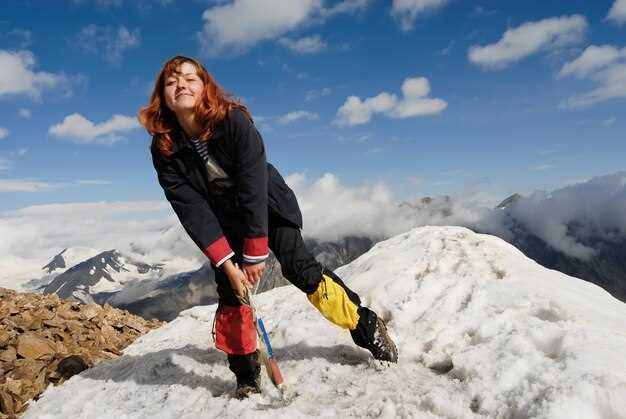
High altitude hunting presents unique challenges that demand both physical and mental preparedness. As hunters ascend to elevations often exceeding 8,000 feet, the composition of the air changes significantly, leading to decreased oxygen levels. This drop in oxygen can affect your energy levels, endurance, and overall performance during the hunt. Understanding how altitude impacts your body is crucial for achieving success in these demanding environments.
In preparation for high altitude hunting, it is vital to focus on enhancing your physical fitness. Engaging in regular cardiovascular and strength training can improve your body’s capacity to adapt to reduced oxygen availability. Activities such as running, cycling, and hiking at varying elevations help build stamina, while strength training with an emphasis on core stability and leg strength prepares you for the physically taxing aspects of the hunt.
Additionally, acclimatization plays a critical role in adapting to high altitude conditions. Gradually increasing your altitude exposure allows your body to adjust more effectively. This not only minimizes the risk of altitude sickness but also maximizes your chances of a successful and enjoyable hunting experience. Preparing your body should involve both a dedicated fitness regimen and strategic acclimatization methods, ensuring that you are ready to tackle the challenges of high altitude hunting head-on.
Understanding Physiological Changes at High Altitude

High altitude environments present unique challenges to the human body due to decreased atmospheric pressure and lower oxygen levels. As you ascend to greater elevations, your body undergoes significant physiological changes to adapt to these conditions. Understanding these changes is crucial for effective prep before embarking on a high-altitude hunting trip.
One of the primary adaptations involves an increase in breathing rate, known as hyperventilation. This response helps to increase oxygen intake, aiding the body in compensating for reduced oxygen availability. This adjustment may lead to symptoms such as shortness of breath and increased heart rate, which are common during the initial stages of altitude acclimatization.
Additionally, your body starts producing more red blood cells to enhance its oxygen-carrying capacity. This process, known as erythropoiesis, can take several days to weeks, depending on the individual and altitude. Maintaining hydration is essential during this phase, as dehydration can exacerbate altitude sickness symptoms.
At high altitudes, the body may also experience changes in blood pH due to altered carbon dioxide levels. This shift can result in respiratory alkalosis, where the blood becomes more alkaline. This condition often contributes to dizziness and headache, which are common experiences for those unaccustomed to high elevations.
Furthermore, acclimatization can lead to increased capillary density in muscles, improving oxygen delivery during physical activities. Endurance performance may enhance over time as the body effectively adapts to the stress of higher elevations. Proper physical preparation through cardiovascular training can facilitate this adaptation process and minimize potential negative effects when hunting in these demanding environments.
In summary, understanding the physiological changes at high altitude is essential for effective preparation. By recognizing the body’s adaptations and responses, hunters can better equip themselves for a successful and safe experience above sea level.
Key Training Regimens to Build Stamina and Strength

Preparing for high-altitude hunting requires a well-rounded training regimen that emphasizes both stamina and strength. The physical demands at elevated elevations can be significant, making it essential to focus on specific exercises that will enhance your performance in these conditions. Below are key training regimens designed to boost your physical capabilities:
-
Cardiovascular Training:
Building endurance is crucial for high-altitude activities. Incorporate various forms of cardiovascular exercises into your routine.
- Running or Jogging: Start with flat terrain before transitioning to hilly or mountainous areas.
- Cycling: Great for building leg strength and overall stamina; opt for both road biking and mountain biking.
- HIIT (High-Intensity Interval Training): Engage in short bursts of high-intensity exercises followed by rest periods to improve aerobic capacity.
-
Strength Training:
Developing muscle strength ensures that you can handle the physical challenges encountered during your hunt.
- Compound Lifts: Include squats, deadlifts, and bench presses to engage multiple muscle groups.
- Functional Exercises: Incorporate movements such as lunges, kettlebell swings, and step-ups to simulate the actions performed while hunting.
- Core Workouts: Strengthen your core with planks, Russian twists, and medicine ball exercises to maintain stability on uneven terrain.
-
Altitude Simulation:
Prepare your body for the thin air encountered at high altitude by simulating conditions.
- Training at Elevation: Whenever possible, conduct training at higher elevations to acclimatize your body.
- Hypoxic Training: Use hypoxic masks to create a low-oxygen environment and simulate altitude training.
- Stair Climbing: This mimics the steep ascents and descents you may encounter while hunting and helps improve your cardiovascular fitness.
-
Flexibility and Recovery:
Stretching and recovery exercises play a vital role in maintaining mobility and preventing injuries.
- Dynamic Stretching: Incorporate stretches that prepare your muscles before workouts.
- Yoga or Pilates: These practices enhance flexibility, balance, and core strength.
- Proper Nutrition and Hydration: Fuel your body with nutrient-dense foods and stay hydrated to support recovery and performance.
By integrating these training regimens into your routine, you will build the necessary stamina and strength to ensure a successful high-altitude hunting experience.
Nutritional Strategies to Combat Altitude Sickness
When preparing for high altitude hunting, managing your nutrition is crucial to mitigate altitude sickness effectively. At high altitudes, the body faces a decrease in oxygen levels, which can lead to physical fatigue and discomfort. One important nutritional strategy is to increase your carbohydrate intake. Carbohydrates provide a quick source of energy, which is particularly beneficial as your body works harder to adapt to the thin air.
Hydration is another key element; drinking plenty of fluids helps maintain blood volume and supports oxygen transport. Choose fluids that contain electrolytes to further aid in hydration and balance. Incorporating foods rich in potassium, such as bananas and avocados, can also help combat altitude-related symptoms by supporting muscle function and reducing fatigue.
Moreover, consuming a balanced diet that includes proteins, healthy fats, and complex carbohydrates will ensure sustained energy levels during your hunting expedition. Foods high in antioxidants, like berries and leafy greens, can protect your body from oxidative stress caused by altitude. Also, consider including iron-rich foods such as lean meats and legumes. Adequate iron levels are essential for hemoglobin production, enhancing your body’s ability to carry oxygen.
Pre-acclimatization through nutrition can enhance your physical performance. Eating small, frequent meals before and during your trip can provide consistent energy without overwhelming your digestive system. This approach helps you adapt more smoothly to the altitude and minimizes the risk of altitude sickness.